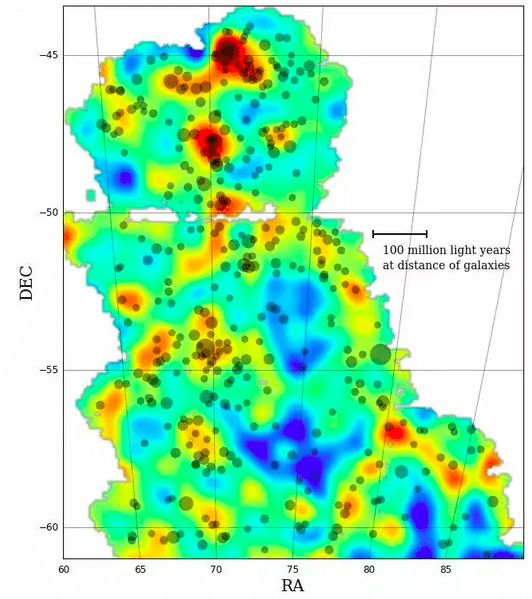First DES dark matter map reveals the invisible
The Dark Energy Survey has published its first dark matter map, something that will eventually be joined by more maps comprising a series. The series will feature the most detailed contiguous maps of their size, and they aim to improve scientific understanding of how dark matter influences or otherwise is involved in galaxy formation. With them, we are able to see what is otherwise invisible, a picture that will grow over the next five years for which the program is slated.
The first of the Dark Energy Survey maps is shown below, and was released on April 13 at the American Physical Society meeting that took place in Baltimore. Not only are the maps themselves and the data revealed by them notable, but also the camera — one of the most powerful digital versions to have thus far existed — that is responsible for the maps.

Called the Dark Energy Camera, this digital camera captures 570-megapixel images. In order to "see" the dark matter, which is invisible, researchers must look for gravitational lensing, a sort of distortion from bent light as caused by the gravitational pull of dark matter.
The aforementioned camera was made by and tested at the Department of Energy's Fermi National Accelerator Lab, and it is now mounted on the Victor M. Blanco telescope in Chile. The processing of the massive amounts of data, however, is done at the National Center for Supercomputing Applications in Illinois. Though the map shows a large area, it only covers 3% of the eventual area the Dark Energy Survey will document over the next half decade.
SOURCE: EurekAlert
